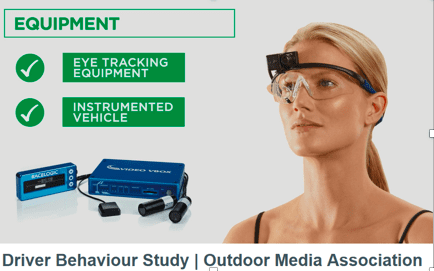By Ken Klein, Executive Vice President, OAAA.
Eye-tracking research in Australia validates US research that shows digital billboards are not distracting to drivers.
The out of home (OOH) industry in Australia (Outdoor Media Association, OMA, based in Sydney) has translated this new research into an easy-to-understand video presentation.

Key conclusions:
- Digital billboards do not draw drivers’ attention away from the road for dangerously long periods
- Eye glances (“fixations”) were similar when on-premise signs were present compared to billboards
The Australian study was based on 29 drivers fitted with eye-tracking glasses who drove an instrumented vehicle in Brisbane.
Interesting points from Down Under:
- The long reach of the 2-second standard set in the US a decade ago. Motorists’ glances longer than 2 seconds “for any purpose” increase risk of crashes and near crashes, according to US government-sponsored research released in 2006 (“The Impact of Driver Inattention on Near-Crash/Crash Risk: An Analysis Using the 100-Car Naturalistic Driving Study Data,” National Highway Traffic Safety Administration). The Australian report cited this 2-second standard established by US government research, pointing out that the “average fixation durations for all signage types were well below .75 seconds” in the Australian research.
- Regulators are parochial State and local officials in Australia were aware of international studies on digital billboards, but hungered for research close to home.=
- Digital billboard critic Jerry Wachtel is omni-present. The Australian study noted that a 2009 US report recommended using an instrumented vehicle and eye-tracking technology (the methodology which was used in Australia). That 2009 US report was co-authored by Jerry Wachtel (“The Effects of Commercial Electronic Variable Message Signs on Driver Attention and Distraction,” Federal Highway Administration). In late 2013, the US federal government released its research that said digital billboards are not distracting. Its study was based on methodology recommended by Wachtel and others. Read about it in The Hill.
Paid Ad

















